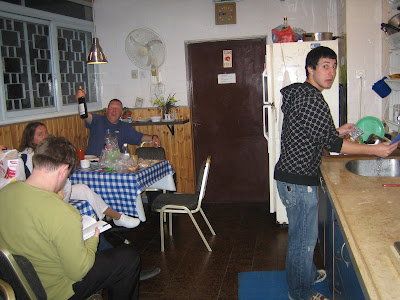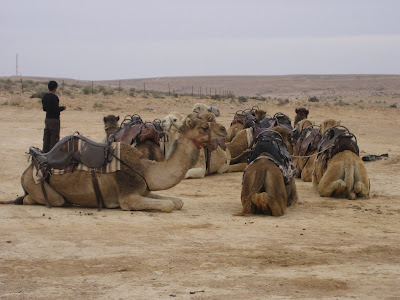




Bahai Gardens
Background info on Bahai:
The Bahai faith is a fairly young religion that started in the mid 1800's. It is monotheistic and emphasizes equality and unity of all people, believing that all beings have an underlying commonality. The teachings speak of gender equality, world peace, the need for education, and harmony between religion and science. Historically, it stemmed from Islam, but it considers itself a completely separate tradition. A couple similarities I found are: followers of Bahai abstain from alcohol and drugs, must make a pilgrimage to the holy sites once in their lifetime, pray daily (though only once a day), are encouraged to donate to their religious community, and fast from sun-up to sun-down during the holy month on their calendar. The traditional Bahai calendar consists of 19 months with 19 days in each one. Nine and 19 are holy numbers due to the supposed number in the original group of followers. There are about 6 million Bahai people today and it is second only to Christianity in the geographical spread of adherents.
The Shrine of the Bab, in the middle of the gardens, houses the remnants of the founder of the religion, Ali-Muhammad, who in 1844, declared himself to be the promised one and the gate (Bab in Arabic) through which prophecies would be told. The Persian leaders did not like this, so shortly after his declaration, he was executed in what is now Iran. His body was moved to the Shrine of the Bab in 1909. The lower half of the garden was opened in the 1960's and the upper half in 2001. There is a staff of 100 full time gardeners. The money for the upkeep comes entirely from Bahai donations and they do not accept money from outsiders. There are no souvenir shops and the tours are free.
Bahai believe that Israel is solely a holy place. It is supposedly sacrilege to live and conduct daily life here. Followers do not visit Israel as normal tourist here on vacation. They are granted special papers or visas given specifically to pilgrims.
My trip to the gardens:
I decided to walk to the top of the gardens, located on Mount Carmel, because my German roommate told me it wasn't such a bad walk. However, it is entirely up hill and quite steep. By the time I made it to the top, my water bottle had contracted due to the change in pressure (there's a chance it was my imagination). You can't just walk right up the steps of the garden because they, and most areas around the Shrine, are closed to anyone not on a tour, besides pilgrims. There is also no road that simply runs up the hill parallel to the garden. So, you are left on your own to search for a way up that successfully winds through the neighborhoods, taking a combination of staircases and roads. And, to make it a little more challenging, it is not well marked. I began to guess that most people take public transportation to the top. After 50 minutes of hiking and over 200 stairs, I made it to the entry of the tour. All I wanted to do was jump in one of the Bab's fountains, but of course instead, I was told to put on my long-sleeved shirt and informed that the tour is an hour-long walking tour with 700 stairs. I felt like a real Bahai pilgrim. The tour was well worth the journey and I learned a lot about the Bahai faith.
Pictures:
1st: View from the top. The upper gardens and the Shrine of the Bab.
2nd: One of the terraces. There are a total of 19. Everything is absolutely flawless. I don't envy the people who have to mow the steep hills of grass.
3rd: Building housing artifacts of the Bab and early Bahai followers. Open only to pilgrims
4th: View of the upper gardens from outside the Shrine. Bahai, Bahai birdie.
5th: The 200+ staircase in one of the neighborhoods. It was like going to Keith and Yumi's except much, much worse. Note the man who stopped for a snack and water break.















































